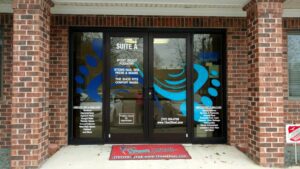Table of Contents
What Are Ganglions?
Causes
Symptoms
How Are Ganglions Diagnosed?
Medical History
Your Physical Exam
Testing
If a bone spur is suspected, x-rays may be needed. Fluid removal (needle aspiration) may be done to help determine the degree of swelling and to decrease pain. To confirm a ganglion, magnetic resonance imaging (MRI) may be done, which reveals images of soft tissue and bone. Sometimes, special dyes may be injected into the area to show the outline of the ganglion.
Fluid withdrawn from the ganglion may reveal the severity of the swelling and decrease pain.
How Are Ganglions Treated?
Nonsurgical Care
Pads placed around the ganglion can ease pressure and friction. Fluid removal may also relieve symptoms, through ganglions may recur.
Limiting movements or activities that increase pain may bring relief. Icing the ganglion for 15-20 minutes may temporarily relieve inflammation and pain.
If your inflammation is severe, your podiatrist may treat your symptoms with medication.






